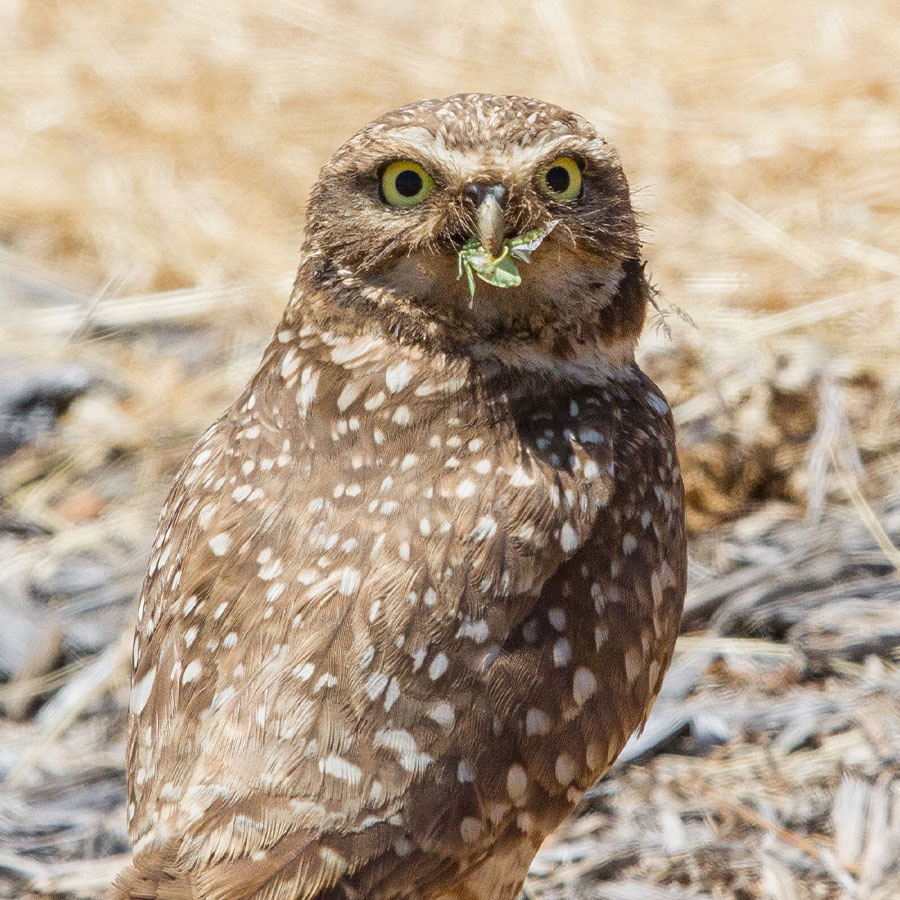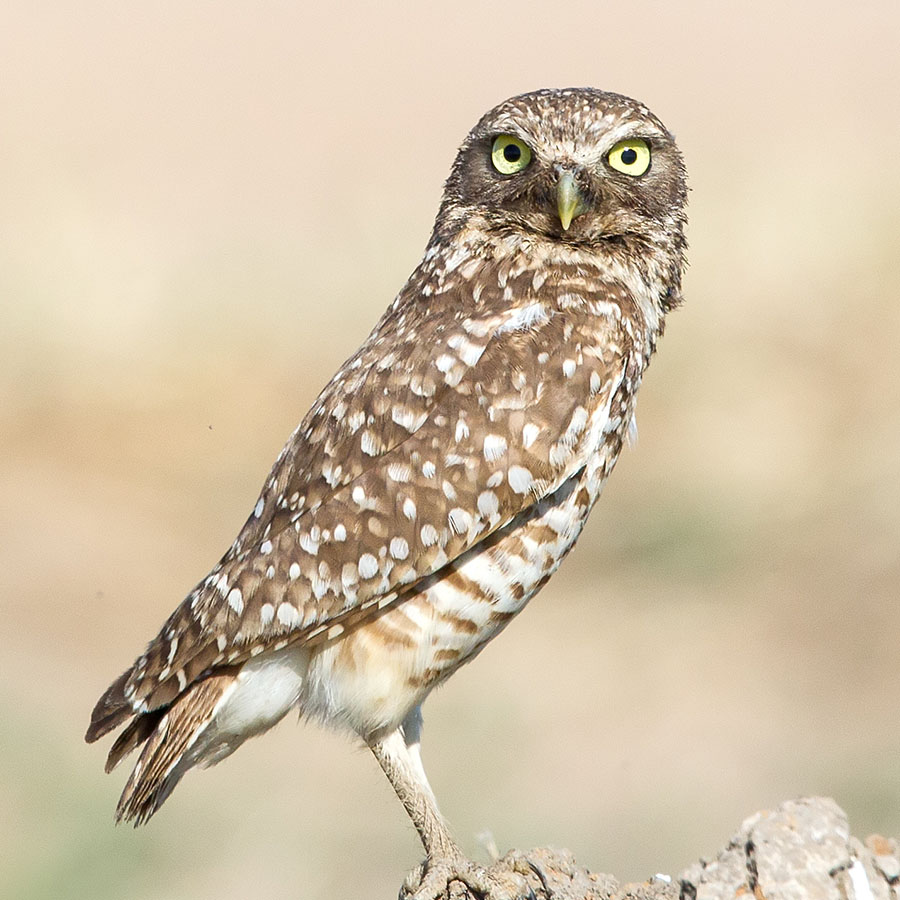Athene cunicularia
Burrowing Owl
The Burrowing Owl is a small, ground-dwelling owl found throughout most of the western United States. Active both day and night, Burrowing Owls use ground burrows or other cavities for nesting, cover and forage in grasslands and agricultural fields. In California, most nesting burrows are abandoned California ground squirrel burrows.
The species was widespread in California prior to 1945 (Grinnell and Miller 1944), but urbanization and agricultural conversion of nesting areas have reduced the population significantly since then. Existing populations have been reduced to small fragmented groups frequently surrounded by urban development. It’s estimated that a decrease of nearly 60 percent in California populations has occurred since the 1980s (DeSante and Ruhlen 1995). Burrow destruction, the effects of grazing, shooting, secondary poisoning from ground squirrel eradication programs, and collisions with automobiles have historically been the most frequently cited factors for this decline (Remsen 1978). However, in the past 20 to 30 years, the increase in commercial and residential development has produced the largest single impact on populations.
In the Sacramento Valley, Burrowing Owls are found in remnant patches of grassland habitat, in ruderal areas, along levees and roadsides, and in agricultural fields. Their territories tend to be very localized, with most owls hunting within 600 meters of their burrows during the breeding season (Gervais and Rosenberg 2008). They forage primarily in grasslands and agricultural fields, where they prey upon large insects, rodents, small birds, reptiles, and frogs at night and sometimes during the day (Haug et al. 1993). Burrowing Owls have been known to nest along rice field berms in the Sacramento Valley and to use fallow and disked rice fields for foraging.
The Burrowing Owl is on the California Bird Species of Special Concern Priority 3 list and is a federal species of conservation concern (USFWS 2008), primarily because of habitat loss and degradation from rapid urbanization and conversion of agricultural lands to orchards and vineyards.
Burrowing Owls: Leslie Morris


